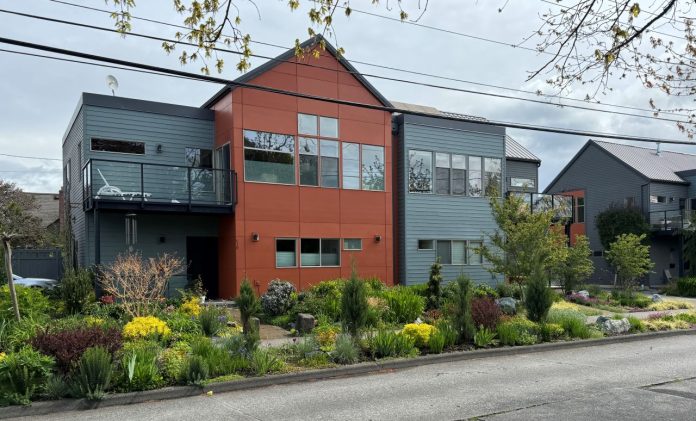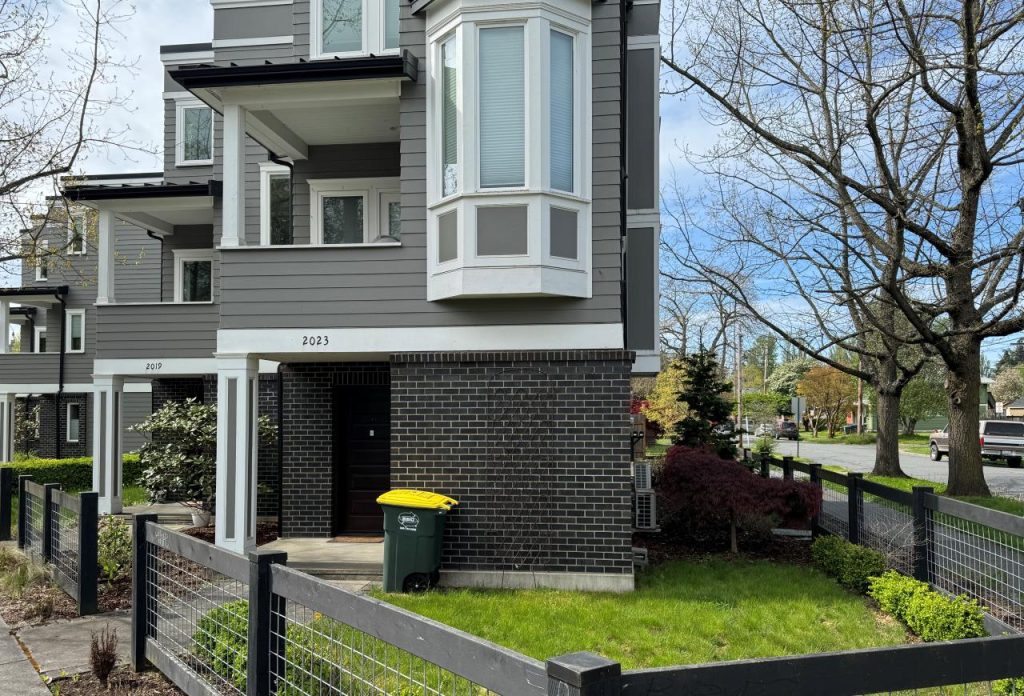
Housing is a basic human need. It’s more than shelter — it provides security, privacy, and access to electricity, plumbing, internet, and civic life. It’s a stable address for job applications and voter registration. It’s the foundation of independence.
Yet Bellingham now ranks as the fourth most unaffordable housing market relative to income among all U.S. cities — and the most unaffordable small city under 150,000 residents.
This forces many working people out of town. But what may seem like a cheaper option becomes more expensive when transportation is factored in — longer commutes, more car dependence, and rising fuel costs. The environmental costs are even steeper. When cities push growth outward, it paves over farmland and forests, increases carbon emissions, and locks in unsustainable sprawl.
Per-capita emissions are highest in suburbs and lowest in denser urban neighborhoods. As author and climate activist Bill McKibben notes, “Denser towns and cities make for a cleaner planet.”
True affordability isn’t just the price of a home — it’s the total cost of living. That’s why we must make it easier to build energy-efficient, reasonably priced housing within the city — close to work, schools, and transit.
Subsidized affordable housing alone can’t close the gap. The Bellingham Home Fund, while effective at leveraging federal and state grants, meets only a fraction of the need — even in the best of times. With federal funding cuts and a state budget crisis, that fraction is poised to shrink.
That means we must also enable more affordable market-rate housing.
While little can be done about the rising cost of land in a desirable location, we can divide that cost by allowing more homes per lot and permitting lot splits citywide.
This makes compact homes — cottages, townhomes, multiplexes — dramatically more affordable. These options are ideal for singles, empty nesters, and first-time buyers. They also use fewer building materials, require less labor, and are more energy efficient — lowering both construction and utility costs.

Today we separate commercial and residential uses. But allowing small-scale mixed use supports local businesses, encourages walkability, and reduces reliance on cars — further lowering living costs.
Infill homes in established neighborhoods also strengthen the city’s finances. With infrastructure already in place, new residents help spread costs more broadly — potentially softening the blow of projected double-digit annual increases in water and sewer rates.
Urban villages where apartment buildings are allowed are a step forward, but they cover less than a tenth of Bellingham’s land. Expanding apartment zoning to more areas can run up against local opposition and the criticism that new developments are too blocky. A form-based code that allows gentle density and local businesses throughout the city would accommodate growth while enhancing neighborhoods.
The complexity of our 430 separate zones drives up costs for both housing and small businesses. Adopting a streamlined code like SmartCode could consolidate these into just six, simplify approvals, and allow most projects to proceed by right — based on clear design standards.
Affordability also depends on income. New construction creates jobs and boosts local spending. A wider range of housing options at different price points helps employers attract and retain workers — a growing concern across many sectors.

Taxing new housing to fund the creation of low-income housing can appear a seductive solution. While called “inclusionary zoning,” this approach can have an exclusionary effect if it shuts down homebuilding. Research shows many inclusionary zoning programs fail to deliver meaningful affordability. Developers often build elsewhere to avoid the affordability requirements and prices overall remain high due to limited supply.
This suits opponents perfectly: they can block new housing while appearing pro-affordability — shifting blame to builders.
They argue the market produces only “unaffordable housing.” But that’s largely because of the exclusionary zoning, prescriptive design standards, and gauntlet-like approval process, all of which neighborhood activists tend to defend.
Moreover, new homes — like new cars — are more expensive than equivalent older homes, which typically decline in relative value by 1 to 2% a year. That sets off a filtering effect: higher-income households move into new units, vacating older ones for moderate-income renters. This continues down the income ladder, improving access and choice across the board. Everyone in the chain moves into better housing than they previously could afford.
To be sure, even smart regulatory reform won’t make new construction affordable to the lowest-income residents. That’s why we must also invest in self-reliant local models — like community land trusts and revolving housing funds supported by public and philanthropic capital.
Montgomery County, Maryland, offers one model: a mixed-income housing fund where two-thirds of units rent at market rates, subsidizing the remaining third for low-income households. These integrated communities produce better social, health, and educational outcomes than income-segregated housing.
A comprehensive housing strategy must combine three elements: regulatory reform to allow more homes, community ownership to preserve deep affordability, and a range of housing options in close-in, connected neighborhoods. That’s how we tackle the affordability crisis — while meeting our climate goals and building a more inclusive city.

Andrew Reding (Guest Contributor)
Andrew Reding is a policy analyst and three-term Whatcom County Democrats chair running for Bellingham City Council, with a wide range of endorsements.
